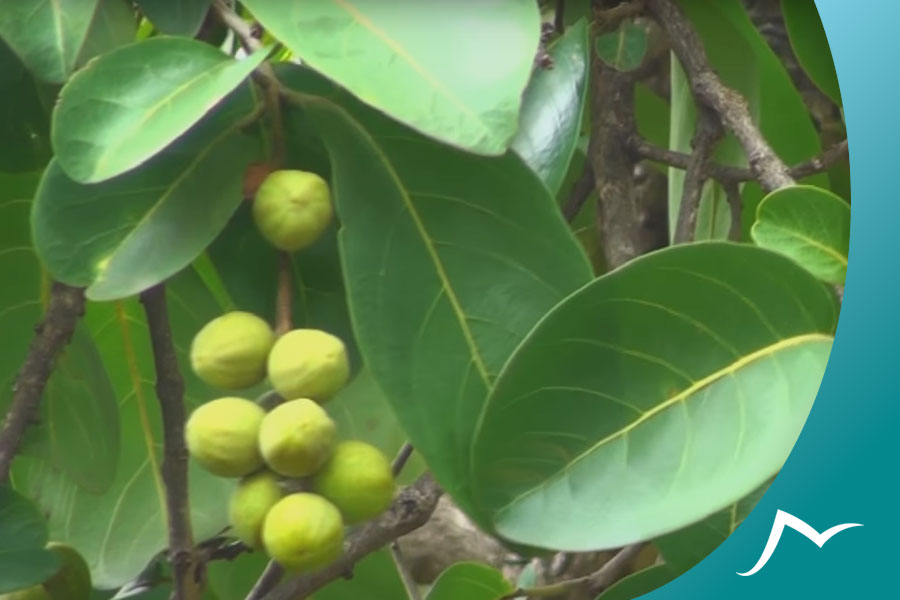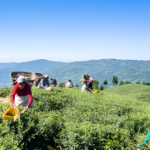Harro, also known as Haritaki or Terminalia chebula, is a tree native to the Indian subcontinent and Southeast Asia. Its fruit is widely used in traditional medicine and cooking in Nepal and other countries. In this blog post, we will explore the various aspects of Harro, including its types, medicinal properties, cultural significance, harvesting and preparation techniques, and its impact on the Nepali economy. We will also provide a recap of Harro’s significance and prospects in Nepal. So, join us on this journey to discover the wonders of Harro in Nepal.
Types of Harro found in Nepal
Harro is widely used in Nepal for its medicinal properties and culinary uses. In this blog, we will explore the different types of Harro found in Nepal, their appearance, taste, and uses.
Traditional Harro
Traditional Harro is a small, greenish-yellow fruit with a wrinkled exterior. It is the most commonly used type of Harro in Nepal and is highly valued for its medicinal properties. Traditional Harro has been used in Ayurvedic medicine for centuries to treat various ailments, including digestive disorders, respiratory problems, and skin diseases. Its bitter, astringent taste is often mixed with other ingredients to balance its flavor. Traditional Harro is a flavoring agent in traditional Nepali dishes such as chutneys and pickles.
Wild Harro
Wild Harro is another type of Harro found in Nepal. It has a similar appearance to traditional Harro but is slightly smaller in size. Wild Harro is known for its stronger, more bitter taste and is often used in traditional medicine to treat digestive problems and respiratory disorders. It is also used in Ayurvedic remedies for hair and skin care.
Cultivated Harro
Cultivated Harro is a newer variety of Harro grown commercially in Nepal. It has a smoother, more polished appearance than traditional Harro and is slightly larger. Cultivated Harro has a milder taste than traditional or wild Harro, making it a popular choice for culinary uses. It is often used as a spice in Nepali cuisine and is also valued for its medicinal properties.

Medicinal properties of Harro
Harro is widely used in Nepal for its medicinal properties and is essential to Ayurvedic medicine. In this blog, we will explore the medicinal benefits of Harro, including its impact on digestive health, respiratory health, skin and hair health, immune system support, and other benefits.
Overview of Harro’s medicinal benefits
Harro is rich in antioxidants, vitamin C, and other phytochemicals, giving it various health benefits. It is known to have anti-inflammatory, antibacterial, and antifungal properties, making it a valuable tool for fighting infections and reducing inflammation. It is also believed to balance the three doshas, or body energies, in Ayurvedic medicine.
Specific health benefits
Digestive Health
Harro is commonly used to treat digestive issues, including constipation, bloating, and indigestion. It is a natural laxative that can help to regulate bowel movements and relieve constipation. It also has a mild cleansing effect on the intestines, which can help to reduce inflammation and improve overall gut health.
Respiratory health
Harro is used in traditional medicine to treat various respiratory problems, including coughs, asthma, and bronchitis. It has an expectorant effect, which can help to clear the lungs and airways of mucus and other debris. It is also believed to have anti-inflammatory properties that can help to reduce inflammation in the respiratory tract.
Skin and hair health
Harro is commonly used in traditional remedies for skin and hair care. It is believed to have a cleansing effect on the skin, helping to reduce inflammation and prevent breakouts. It is also used in hair care remedies to promote healthy hair growth and prevent hair loss.
Immune system support
Harro is rich in antioxidants, which can help to boost the immune system and reduce the risk of infections. It is also believed to have antimicrobial properties, making it an effective tool for fighting infections and reducing inflammation.
Other benefits
Harro has been found to have a range of other benefits. Here are some additional benefits of Harro:
May improve cardiovascular health: Harro has been found to affect the heart and blood vessels positively. It may help reduce high blood pressure and improve blood flow, lowering the risk of heart disease and stroke.
May aid in weight loss: Harro is low in calories and fiber, making it an excellent addition to a weight loss diet. It can help you feel full and satisfied, reducing your overall calorie intake.
May have anti-inflammatory properties: Some studies suggest that Harro may have anti-inflammatory properties, which can help reduce inflammation in the body and prevent chronic diseases.
May improve cognitive function: Harro contains antioxidants that may help protect the brain from damage caused by free radicals. It may also improve cognitive function, memory, and concentration.
May have anticancer properties: Some studies suggest that Harro may have anticancer properties, which can help prevent the growth and spread of cancer cells.

Cultural Significance of Harro in Nepal
Use in festivals and rituals.
Harro has a significant role in Nepali festivals and rituals. During the festival of Tihar (Festival of Lights) , Harro leaves and fruits are used for decoration as they are believed to bring good luck and prosperity. Similarly, Harro is also used in wedding ceremonies, where the bride and groom exchange garlands made of Harro flowers.
Use in traditional medicine
Harro has been used for centuries in traditional Nepali medicine for various ailments. It is considered to have antibacterial, antifungal, and anti-inflammatory properties, making it helpful in treating a range of health conditions, including digestive issues, respiratory problems, and skin infections. Harro is believed to help boost the immune system and promote overall wellness.
Use in cooking
Harro is a versatile ingredient in Nepali cuisine used in various dishes such as chutneys, pickles, and curries. The fruit’s sour taste and aroma add a unique flavor to the dishes, and it is natural preservative properties make it a popular ingredient for pickling vegetables and fruits.
Folklore and mythology surrounding Harro
Harro also has a significant presence in Nepali folklore and mythology. According to a popular legend, Harro is believed to be a gift from Lord Shiva to his wife, Parvati. It is said that Parvati was impressed by the medicinal properties of Harro and asked Lord Shiva to create a tree that would bear Harro fruits. The tree is believed to have grown in the Himalayan region of Nepal, and the fruit is considered a divine gift from Lord Shiva to humanity.
Harvesting and preparation of Harro
Growing Harro
Harro trees can be found in the wild in the hilly regions of Nepal, but they are also cultivated on farms. Harro trees prefer well-drained soil and grow well in temperate and subtropical climates. Farmers require significant water during the growing season, and farmers often use organic fertilizers to boost growth.
Harvesting techniques
Harro fruits are usually harvested from September to December. The fruits are plucked from the tree when they mature and turn yellow. They are then dried in the sun for a few days until they become dry and hard. After drying, the seeds are removed, and the remaining outer flesh is used for various purposes.
Traditional methods of preparation
In traditional Nepali households, Harro is often prepared in various ways. The dried fruit can be crushed into a fine powder to make chutneys and pickles. The fruit is also boiled and strained to make a refreshing drink known as Harro ko Paani. The leaves of the Harro tree are also used to make plates and cups, especially during festivals and celebrations.
Modern processing techniques
Modern processing techniques have made it easier to extract and use the various components of Harro for commercial purposes. The fruits are processed to extract their pulp, which is then used in the food and beverage industry to add flavor and aroma. The seeds are also used to extract oil, which is used in cosmetics and hair care products. Harro extracts are also used in the pharmaceutical industry to make herbal medicines and supplements. The use of modern processing techniques has helped to increase the value of Harro in the market and has opened up new avenues for income generation for farmers.
Harro in Nepal’s economy
Importance of Harro in Nepal’s Economy
Harro significantly contributes to Nepal’s economy, especially for rural communities. Its high demand in both domestic and international markets has made it a valuable commodity for the country. According to the Ministry of Agriculture and Livestock Development, Harro’s export value in 2022 was NPR 1.3 billion, estimated to reach NPR 2 billion by 2025. This indicates the importance of Harro cultivation in Nepal’s economy.
Harro trade and exports
Nepal exports Harro to India, China, and other countries. The export of Harro has been increasing over the years, which has provided new opportunities for farmers to generate income. In addition, the government has taken various initiatives to promote Harro exports by organizing trade fairs and providing subsidies to farmers for cultivating and processing Harro. However, the high dependence on India for Harro exports has resulted in price fluctuations due to trade barriers and other factors.
Challenges and opportunities in Harro cultivation and trade
Despite its high demand, the cultivation and trade of Harro face various challenges in Nepal. The lack of proper infrastructure, such as roads and storage facilities, hinders the transportation and preservation of Harro. Additionally, the traditional Harro cultivation and processing methods limit its production capacity and quality. However, these challenges also present opportunities for improvement through the modernization of techniques and infrastructure.
FAQs
Can Harro be consumed raw?
No, Harro is very sour and is not generally consumed raw. It is usually mixed with other ingredients or cooked in various dishes.
What are the typical dishes that use Harro as an ingredient in Nepal?
Some typical dishes that use Harro as an ingredient in Nepal are achaar (pickle), soup, chutney, and curry.
Can Harro help with weight loss?
Harro has been shown to have appetite-suppressant properties, which may aid in weight loss when consumed in moderation as part of a healthy diet.
How long does it take for Harro to grow in Nepal?
Harro trees usually take 10 to 15 years to grow and bear fruit.
Can Harro be used as a natural dye?
Yes, Harro can be a natural dye to color fabrics and textiles.
Is Harro expensive in Nepal?
Harro is relatively inexpensive in Nepal, as it is a locally grown fruit.
Can Harro be grown in other countries?
Harro can be grown in other countries with similar climates, such as India and Bangladesh.
What is the shelf life of Harro powder?
The shelf life of Harro powder is around 6 months if stored in a cool and dry place.
Can Harro be used as a natural remedy for hair loss?
Harro has traditionally been used as a natural remedy for hair loss in Nepal, as it is believed to strengthen hair follicles and promote growth.
Is Harro a good source of vitamins and minerals?
Yes, Harro is a good source of vitamin C, iron, and calcium, among other vitamins and minerals.
Can Harro be used to treat diabetes?
Some studies have shown that Harro may help regulate blood sugar levels in individuals with diabetes, but more research is needed to confirm its effectiveness as a treatment. It is essential to consult with a healthcare professional before using Harro to treat diabetes.
Conclusion
In conclusion, Harro is an integral part of Nepali culture and has been used for centuries for its medicinal, culinary, and cultural significance. Its unique taste and aroma have made it a popular ingredient in various dishes, while its medicinal properties have been praised in traditional Ayurvedic medicine. Harro’s cultural significance is evident in its use in festivals, rituals, and folklore, and its economic importance to Nepal cannot be overstated.
With increasing global interest in traditional medicine and organic foods, there is a growing market for Harro and other Nepali herbs and spices. Nepal can become a significant player in this market by promoting sustainable cultivation practices and developing value-added products that can be marketed internationally.
Harro has a long and rich history in Nepal and has played an essential role in Nepali culture, economy, and health. Nepal must continue to promote sustainable cultivation practices, support local farmers, and develop value-added products to maximize the potential of Harro and other indigenous plants. Additionally, preserving the traditional knowledge and practices associated with Harro cultivation and use is essential, as they are valuable cultural and ecological resources.
If you would like to read similar blog posts on other unique fruits of Nepal, please follow the link:
A Journey to the Heart of Nepali Hog Plum: The Lapsi Fruit



